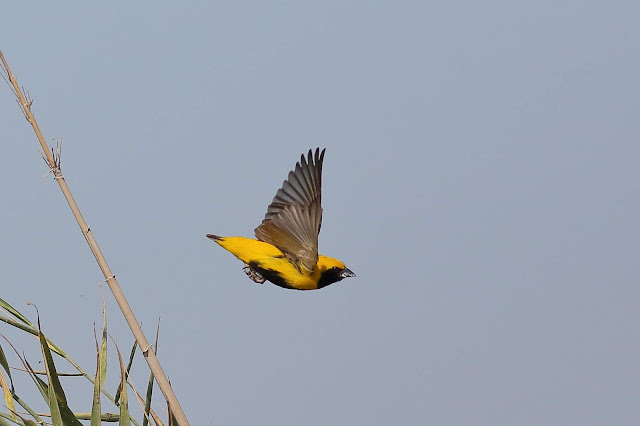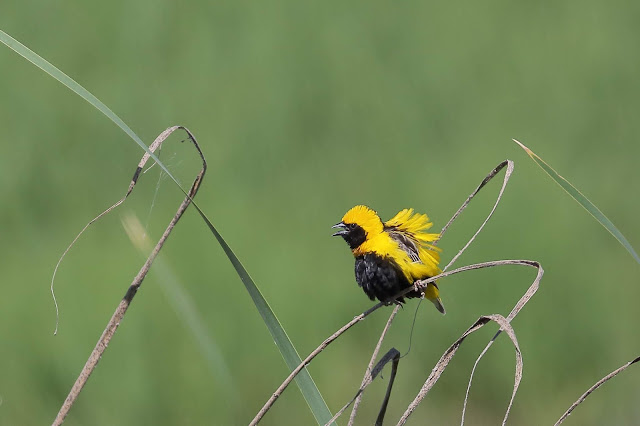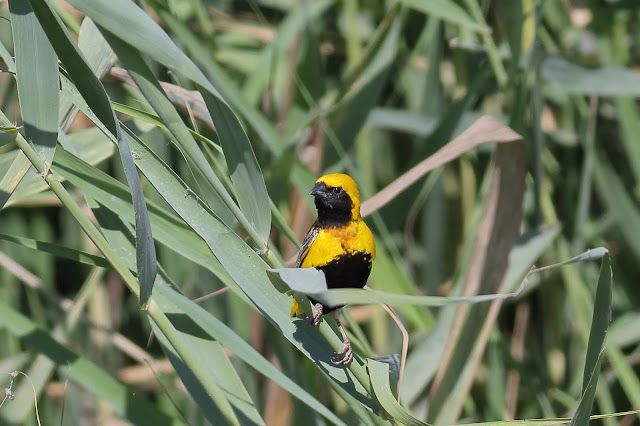Hola una vez más.
Hi again.
En el siguiente enlace podéis ver nuestros próximos viajes fotográficos y de observación de aves y mamíferos nacionales y al extranjero. Espero que os gusten y os animéis a venir conmigo. Una experiencia que nunca olvidareis.
Hi again.
En el siguiente enlace podéis ver nuestros próximos viajes fotográficos y de observación de aves y mamíferos nacionales y al extranjero. Espero que os gusten y os animéis a venir conmigo. Una experiencia que nunca olvidareis.
In the following link you can see our next national and foreign Birds and Mammals photographic and observation trips. I hope you like them and I encourage you to come with me. An experience that you will not forget.
Próximos viajes. Next trips.
Próximos viajes. Next trips.
En esta ocasión os muestro algunas de la aves que vimos en una excursión al Brazo del Este a mediados del mes de agosto.
On this occasion I show you some Birds we saw on an excursion to the Brazo del East in middle of August.
El objetivo principal era sacar fotos a tres especies de aves alóctonas, tejedor de cabeza negra (Ploceus melanocephalus), tejedor amarillo (Euplectes afer) y estrilda común (Estrilda astrild).
The main objective was to take pictures of three species of allochthonous Birds, Black-headed Weaver, Yellow-crowned Bishop and Common Waxbill.
¿Os preguntaréis como se las puede ver en España? Pues se trata de aves que hace años fueron introducidas voluntariamente como aves ornamentales y que después fueron liberadas o se escaparon de las colecciones.
Will you wonder how you can see them in Spain? Well, these are birds that were introduced voluntarily as ornamental birds years ago and that were later escaped from the collections.
Además para su establecimiento en libertad fue determinante la adaptabilidad de estas especies y el haber encontrado un hábitat favorable cercano al agua como carrizales, cultivos de arroz, etc.
In addition, for their establishment in freedom, the adaptability of these species was decisive and they found a favorable habitat close to water, such as reedbeds, rice crops, etc.
Will you wonder how you can see them in Spain? Well, these are birds that were introduced voluntarily as ornamental birds years ago and that were later escaped from the collections.
Además para su establecimiento en libertad fue determinante la adaptabilidad de estas especies y el haber encontrado un hábitat favorable cercano al agua como carrizales, cultivos de arroz, etc.
In addition, for their establishment in freedom, the adaptability of these species was decisive and they found a favorable habitat close to water, such as reedbeds, rice crops, etc.
A pesar de la época del año no hizo mucho calor y vimos muchas otras aves lo que hizo que la excursión fuese muy agradable.
Despite the time of year it was not very hot and we saw many other Birds which made the tour very nice.
He decidido poner las fotos tomadas por especies aunque hayan sido tomadas en distintos puntos y momentos de la excursión.
I have decided to put the photos taken by species although they have been taken at different places and moments of the excursion.
Yo creo que de las tres especies que os mencionaba antes es que es más llamativo es el tejedor amarillo (Euplectes afer).
I think that of the three species that I mentioned before the one that it is more striking is the Yellow-crowned Bishop.
Pero la primera especie que vimos fue al tejedor de cabeza negra (Ploceus melanocephalus). Estos machos fueron los que estuvieron más lejos de las tres especies.
But the first species we saw was the black-headed weaver. These males were those that were farther of the three species.
Se encuentran principalmente en África Occidental y Central, aunque poblaciones viven en la región de los grandes lagos y en el norte de Etiopía y Eritrea. Habita exclusivamente en las proximidades del agua, a lo largo de los ríos y junto a los lagos y pantanos. En españa se les puede contemplar también en zonas de regadío, principalmente asociados a cultivos de arroz y maíz.
They are found mainly in West and Central Africa, although populations live in the region of the great lakes and in northern Ethiopia and Eritrea. It inhabits exclusively in the vicinity of the water, along the rivers and next to the lakes and swamps. In Spain they can also be seen in irrigated areas, mainly associated with rice and corn crops.
Algunas hembras estaban construyendo o arreglando sus nidos.
Some females were building or fixing their nests.
También estuvieron mucho más colaboradoras que los machos. Estuvieron más cerca.
They were also much more collaborative than males. They were closer.
Parece que esta llevaba una garrapata.
It seems that she was wearing a tick.
También vimos algunos aguiluchos laguneros occidentales (Circus
aeruginosus).
We also saw some Eurasian Marsh
Harriers.
Y cistícolas buitrones comunes (Cisticola
juncidis).
And Zitting
Cisticolas.
La segunda de las especies invasoras que me encanta por su dibujo y colorido, la estrilda común (Estrilda
astrild).
The second of the invasive species that I love for its drawing and color, the Common
Waxbill.
Esta especie es originaria del África Subsahariana.
This species is native to Sub-Saharan Africa.
Es preciosa.
It is beautiful.
Les pudimos hacer un buen book pues los tuvimos muy cerca.
We could make a good book because we had them very close.
Vimos varias garcillas cangrejeras (Ardeola
ralloides).
We saw several Squacco
Herons.
Y solo un archibebe común (Tringa
totanus).
And a single Common
Redshank.
Y para finalizar con el tema de especies invasoras, os presento al que más me gusta de las tres especies, el tejedor de cabeza amarillo (Euplectes
afer). En la foto os muestro todo machos pues aunque vi una hembra no la pude fotografiar. Las hembras no tienen colores llamativos.
And to end with the invasive species, I present to you the one that I like most of the three species, the Yellow-crowned
Bishop. In the photo I show you all males because although I saw a female I could not photograph her. Females have no flashy colors.
Esta especie también es es originaria de África Subsahariana.
This species is also native to Sub-Saharan Africa.
Impresionante.
Awesome.
Había muchas espátulas comunes (Platalea
leucorodia).
There were many Eurasian
Spoonbills.
Flamencos comunes (Phoenicopterus
ruber).
Greater
Flamingos.
Una familia de cigüeñuelas comunes (Himantopus
himantopus). La hembra a la derecha, los dos jóvenes de este año a la izquierda y el padre detrás.
A family of Black-winged
Stilt. The female on the right, the two young of this year on the left and the father behind.
También había bastantes.
There were also many.
Pero de lo que más vimos fueron los moritos comunes (Plegadis
falcinellus).
But what we saw most were Glossy Ibises.
Un confiado fumarel cariblanco (Chlidonias
hybridus).
A meek Whiskered
Tern.
Y con este martinete común (Nycticorax
nycticorax) que se encontraba él muy seguro en el arbusto, me despido de todos vosotros hasta la próxima entrada.
And with this Night Heron that he think he was very safe in the bush, I say goodbye to all of you until the next post.





























































No hay comentarios:
Publicar un comentario